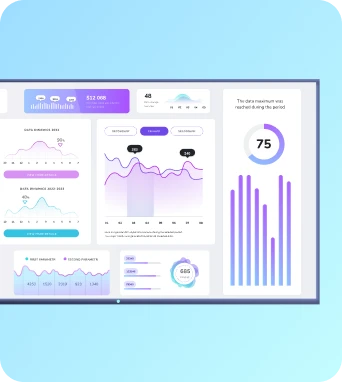AI-powered content recommendations for signage
AI-powered content recommendations for signage use machine learning models to analyse audience, context, performance and content metadata, then automatically suggest or select the most relevant media for each screen. These systems reduce manual playlist curation, increase engagement by personalising content per location and time, and integrate with digital signage platforms like Fugo.ai for automated delivery.
What is AI-powered content recommendations for signage?
How recommendation models, metadata and context signals drive relevance for signage
At the technical core of AI-powered content recommendations for signage are three interlocking components: content metadata, contextual signals, and the ranking or selection model. Content metadata includes explicit tags such as campaign, language, duration, resolution, priority and target audience, plus implicit features derived from the asset itself, for example dominant colours, text recognitions from OCR, or extracted audio transcripts. Contextual signals are the real-time or scheduled inputs that define where and when content should matter: ambient light, proximity sensor counts, calendar entries for meeting rooms, time of day, day of week, local weather, and historical engagement metrics from that device or similar locations. A model learns to weigh those inputs so the most relevant piece of content surfaces. For instance, a model might learn that a short promotional clip performs best in high footfall lobbies between 09:00 and 11:00, while an informational slide is more effective in meeting-room dashboards during scheduled meetings; the model's output is a ranked selection rather than a single forced choice, enabling downstream rules to enforce compliance or fallbacks. Implementation patterns vary by scale and latency requirements. Cloud-hosted inference suits networks where orchestration can tolerate small network hops and centralised analytics are desired; the recommendation API receives a JSON payload of device context and returns ordered content IDs or a playlist fragment. Edge inference is preferable for low-latency or bandwidth-sensitive deployments; a compact model runs on the player device and consumes a trimmed feature set, often limited to time, local sensors and pre-synchronised metadata, producing immediate selection without round-trips. Hybrid architectures combine the two: a cloud model trains on global data and periodically produces compressed policy tables or model quantisations that are deployed to players, with the player performing fast local inference and sending anonymised telemetry back for continuous training. Inline examples include a city-wide retail network that pushes nightly policy updates to players for the next day's promotions, or an office signage setup where a Fugo.ai-connected player queries a recommendation endpoint before each playlist refresh to fetch the highest-ranked items for that room's occupancy state. Models themselves can range from simple heuristic and rule-based systems enhanced with thresholded logic to more advanced supervised learning or contextual bandit algorithms that balance exploration and exploitation. Contextual bandits are especially useful in signage because they can test new content in controlled amounts while learning which items drive desired outcomes, such as clicks on interactive dashboards, form completions for kiosks or measured dwell-time increases on TV dashboards. Regardless of algorithm choice, a production-ready recommendation system for signage requires robust metadata pipelines, deterministic fallbacks for unsupported content formats, and auditability so network managers and IT administrators can understand and override selections to maintain brand safety, accessibility and legal compliance.
Deployment considerations: integrating recommendations into signage platforms and player fleets
Deploying AI-powered recommendations within a signage estate requires orchestration between content management, model inference and player capabilities. The first practical step is standardising metadata: every asset imported into the CMS should carry structured fields such as content category, duration, language, aspect ratio, target audience, priority and tags for compliance. This standardisation lets recommendation engines apply filters reliably. For platforms like Fugo.ai, metadata can be extended via custom fields or via connected asset repositories; the recommendation layer consumes those fields and responds with a list of candidate assets. Next, decide where inference runs. Cloud orchestration provides centralised control and straightforward logging, but you must design for intermittent connectivity and ensure players have cached fallback playlists. Edge inference reduces dependency on network availability and can speed up personalised decisions based on local sensors; when using edge models, prepare a deployment pipeline that pushes model updates as signed artefacts with versioning, and implement health checks to detect and roll back problematic updates. Operationally, monitoring and optimisation are critical. Integrate telemetry collection so players report which recommendations were shown, engagement metrics such as dwell time and interactions, and device health signals like CPU, memory and network latency. Use that telemetry to compute online metrics and offline retraining datasets. In practice, this means building dashboards that show recommendation lift by content tag, location and time window, and setting alerts for anomalies such as sudden drops in content impressions or failed fallbacks. Common pitfalls include poor tagging leading to irrelevant suggestions, a lack of guardrails that allow sensitive content to surface in inappropriate contexts, and overfitting models to a small subset of devices so that recommendations do not generalise. Implement human-in-the-loop controls: present recommended playlists for curator approval, enable staged rollouts to cohorts of players, and provide easy manual overrides in the signage management console. For real-world use cases, Fugo.ai customers often start with simple recommendation flows: use historical playback metrics to nominate top-performing assets per player group, then automate rotation during peak hours. As confidence grows, they introduce contextual signals — calendar APIs for meeting spaces, occupancy sensors for retail displays, or POS events for point-of-sale signage — and move to models that personalise by location. Integrations commonly employed include webhook-based triggers for real-time events, authenticated APIs to retrieve recommended playlists, and scheduled syncs that deliver compressed policy manifests to players. Ensuring compatibility with device capabilities is also essential; recommendation outputs should include alternative assets or transcoding instructions where resolution or format constraints exist so players can display content without interruption.
Final Thoughts on AI-powered content recommendations for signage
Keep the learning going...
AI-powered content moderation
AI-powered content moderation for digital signage uses machine learning models to automatically analyse images, video, text and metadata destined for screens, detecting inappropriate, brand-risk or non-compliant material and applying rules to approve, quarantine or transform content before it reaches players and dashboards in real time or batches.
AI-powered customer insights
AI-powered customer insights use machine learning and computer vision to analyse audience behaviour at digital signage touchpoints. They turn anonymised viewing data — dwell time, attention, footfall and engagement patterns — into actionable metrics that help operators optimise content, measure campaign ROI and improve in-store experience and signage performance.
AI-powered screen health monitoring
AI-powered screen health monitoring uses machine learning and edge or cloud analytics to continuously assess display performance, detect faults such as dead pixels, colour drift, brightness loss, and connectivity issues, and trigger automated remediation or alerts across digital signage and TV dashboard networks to minimise downtime and maintain visual quality.



